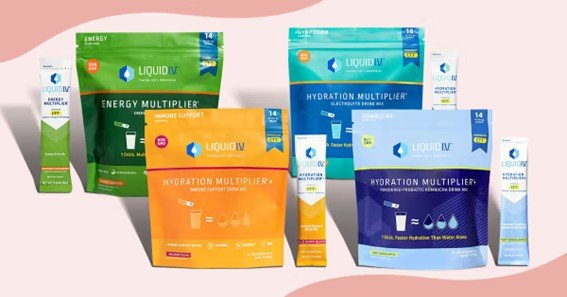Liquid I.V. is a popular electrolyte drink mix designed to enhance hydration by delivering essential electrolytes and vitamins more efficiently than water alone. However, it’s important to understand the appropriate daily intake to maximize its benefits while avoiding potential health risks.
Recommended Daily Intake of Liquid I.V.
For most individuals, consuming one packet of Liquid I.V. per day is sufficient to maintain proper hydration. Each packet is formulated to be mixed with 16 ounces of water, providing a balanced blend of electrolytes and vitamins. This standard dosage aligns with the manufacturer’s guidelines and supports daily hydration needs.
Also Read N: Converting 32/40 To A Percentage: A Step-By-Step Guide
Factors Influencing Liquid I.V. Consumption
Individual hydration requirements can vary based on several factors:
- Activity Level: Engaging in intense physical activities or prolonged exercise increases fluid and electrolyte loss through sweat, potentially necessitating additional hydration support.
- Climate Conditions: Hot or humid environments can lead to increased perspiration, elevating the need for electrolyte replenishment.
- Health Status: Certain medical conditions or illnesses that cause dehydration may require adjusted hydration strategies.
In such scenarios, consuming up to two packets of Liquid I.V. per day may be appropriate to adequately replace lost fluids and electrolytes. However, it’s crucial to consult with a healthcare professional before increasing your intake, especially if you have underlying health conditions.
Also Read P: Timeless Elegance: The Ladies’ Black Flying Jacket – A Style Staple”
Potential Risks of Excessive Consumption
Overconsumption of Liquid I.V. can lead to health issues, primarily due to its sodium and sugar content:
- Sodium Intake: Each packet contains approximately 500 milligrams of sodium, accounting for about 22% of the recommended daily value. Excessive sodium intake can contribute to high blood pressure and other cardiovascular concerns.
- Sugar Content: The standard Hydration Multiplier variant includes 11 grams of sugar per packet, which is 44% of the American Heart Association’s recommended daily intake for women. High sugar consumption can lead to weight gain and increase the risk of metabolic disorders.
Therefore, adhering to the recommended dosage is essential to prevent potential adverse effects associated with excessive intake of these components.
Conclusion
Liquid I.V. can be a valuable tool for enhancing hydration, particularly during periods of increased physical activity or exposure to hot climates. For most individuals, one packet per day suffices. In specific circumstances, up to two packets may be appropriate, but it’s advisable to seek medical advice before making such adjustments. Monitoring your body’s responses and maintaining a balanced diet alongside Liquid I.V. consumption will help ensure safe and effective hydration.
FAQ
- What is Liquid I.V., and how does it work?
- Liquid I.V. is an electrolyte drink mix that utilizes Cellular Transport Technology (CTT) to enhance the absorption of water and key nutrients into the bloodstream, promoting efficient hydration.
- Can I consume Liquid I.V. daily?
- Yes, consuming one packet of Liquid I.V. daily is generally safe for most individuals to support hydration needs. However, it’s important to consider your overall dietary intake of sodium and sugar.
- Is it safe to drink more than one packet of Liquid I.V. per day?
- In situations involving intense physical activity or significant fluid loss, up to two packets per day may be appropriate. Consulting with a healthcare professional before increasing your intake is recommended.
- What are the potential side effects of excessive Liquid I.V. consumption?
- Overconsumption can lead to elevated sodium and sugar intake, potentially resulting in high blood pressure, weight gain, or metabolic issues. Adhering to recommended dosages helps mitigate these risks.
- Are there any alternatives to Liquid I.V. for hydration?
- Yes, other electrolyte drinks and natural options like coconut water can aid hydration. Maintaining a balanced diet rich in fruits and vegetables also supports electrolyte balance.










